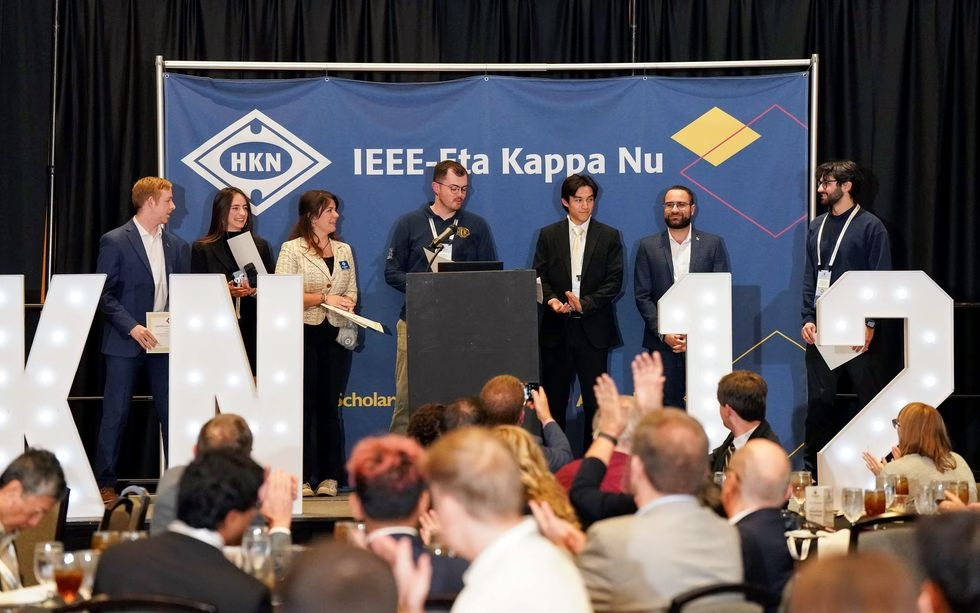Could Deflecting the Sun Help Cool the Planet?

Technology tamfitronics
By Felicity Bradstock – Jun 15, 2024, 4:00 PM CDT
- Scientists conducted the first outdoor test of Solar Radiation Modification (SRM) technology in the U.S., aiming to reflect sunlight and cool the planet.
- The experiment involved spraying tiny salt aerosols to alter cloud composition, mimicking the cloud-brightening effect seen behind ships.
- The project raised concerns about potential consequences and the need for stricter regulations on climate intervention technologies.

Scientists believe they may have found a way of cooling the planet by deflecting light from the sun in the latest climate intervention technology. Solar Radiation Modification (SRM) aims toreflect sunlight up into spaceto temporarily reduce the temperature of the Earth. Scientists have been developing the technology for several years to reach the pilot testing phase. It is based on a scientific concept known as the Twomey effect, where a large number of small droplets reflect more sunlight than small numbers of large droplets. It is believed that if you inject huge amounts of tiny aerosols, which form many small droplets, it could change the composition of clouds. This could theoretically balance out the effects of global warming on a very small scale.
In April, scientists from the University of Washington conducted the first outdoor SRM technology test in the U.S., in San Francisco Bay. They pushed a flipped a switch that allowed a machine to expel a fine mist of tiny aerosol particles hundreds of feet in the air, across the flight deck of a decommissioned aircraft carrier. The researchers wanted to know whether the device would be able to consistently spray the right size salt aerosols in an open-air environment. If successful at the pilot stage, the group would next aim the machine up towards the sky in an attempt to alter the composition of the clouds above the world’s oceans.
The machine works by expelling air at very high pressure through a series of nozzles to create the force needed to turn salt crystals into minuscule particles of the correct size. The process is based on examples of cloud brightening seen in the maritime sector. When traveling, marine vessels leave “ship tracks” behind them, which produce a cloud-brightening effect that has been known to reduce climate warming. A group of scientists in the U.S. believed they could create the same effect through a process that did not require the burning of fossil fuels.
This is the latest of several clean technologies aiming to curb the effects of climate change. Carbon capture and storage (CCS) technologies have grown in popularity in recent years, with several fossil fuel and heavy industry companies adopting the machinery to support decarbonisation efforts. However, energy experts have been highly skeptical about the efficacy of such technologies, with the International Energy Agency suggesting that they cannot be viewed as a long-term solution for decarbonization. Others are uncertain that CCS and other clean technologies will be as effective as companies are promising, with few successful examples having been seen to date.
The U.S. government views SRM as less risky than some other climate-altering technologies that are emerging, as it uses relatively benign sea salt aerosols rather than more dangerous chemicals. The Biden administration is investing in research into SRM and several other climate interventions, although the White House was quick tostatethat “The U.S. government is not involved in the Solar Radiation Modification experiment taking place in Alameda, CA, or anywhere else.”
Many scientists and environmentalists are concerned that the potential consequences of altering solar radiation are unknown. Climate change experts worry that SRM could change ocean circulation patterns and temperatures, or alter precipitation patterns. Without the ability to accurately study the impact of SRM, it could ultimately lead to a change in climatic patterns, which could be devastating for Earth. Others are more concerned about the increase in investment in climate interventions and decarbonization technologies, which is detracting from potential funding for long-term green transition efforts.
In June, politicians in Alameda, California voted tobring an end to the SRM testsbeing carried out in the bay, despite being assured that the experiment posed no threat. The group of scientists running the experiment made it clear that the testing was not aimed at brightening the clouds, rather they were testing the technology to see if it would work outside a lab environment. The test was expected to be carried out for months or years, at a cost of around $1 million a year. The team now intends to search for an alternative site to continue testing.
While many experts oppose the technology, others believe it is necessary to regulate clean technologies to ensure that they are being managed responsibly. This is largely in response to several small-scale, independent experiments that have taken place in recent years with no oversight. For example, a U.S. startuplaunched several balloons containing aerosolsin Mexico last year to test a small-scale commercial SRM intervention. The team had not been given permission by the Mexican government to conduct the experiment, which resulted in the government announcing it would ban activities of this nature in the future. Whether or not SRM technology will be effective in mitigating global warming without detrimental effects, it certainly makes it clear that stricter regulations are needed to manage the rapid emergence of new clean tech.
By Felicity Bradstock for Oilprice.com
More Top Reads From Oilprice.com:
- The World’s 8 Biggest Mining Countries
- U.S. Pushes to Triple Nuclear Energy Production by 2050
- Geopolitical Tensions and Rising Interest Rates Damping Metal Demand
![]()
Felicity Bradstock
Felicity Bradstock is a freelance writer specialising in Energy and Finance. She has a Master’s in International Development from the University of Birmingham, UK.
Related posts
Discover more from Tamfis Nigeria Lmited
Subscribe to get the latest posts sent to your email.



 Hot Deals
Hot Deals Shopfinish
Shopfinish Shop
Shop Appliances
Appliances Babies & Kids
Babies & Kids Best Selling
Best Selling Books
Books Consumer Electronics
Consumer Electronics Furniture
Furniture Home & Kitchen
Home & Kitchen Jewelry
Jewelry Luxury & Beauty
Luxury & Beauty Shoes
Shoes Training & Certifications
Training & Certifications Wears & Clothings
Wears & Clothings


















